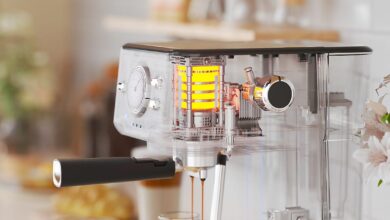The Battle of IC Packages: LQFP vs QFP

When it comes to designing modern electronic devices, selecting the right integrated circuit (IC) package is a critical step. The packaging of an IC not only affects the physical size of the component but also influences its performance, heat dissipation, and ease of assembly. Among the many IC packages available, LQFP (Low-Profile Quad Flat Package) and QFP (Quad Flat Package) are two of the most commonly used options in surface-mount technology (SMT).
If you’ve been sourcing parts from an electronic components distributor, you’re likely to have encountered the terms LQFP and QFP. While both of these IC packages share similarities, there are key differences that make each more suitable for specific applications. In this article, we’ll help you understand these distinctions and provide guidance on selecting the right package for your next project.
What is a Quad Flat Package?
A QFP is a type of surface-mount package for integrated circuits. It features leads extending from all four sides of a square or rectangular body, arranged in a grid pattern. These leads are used to make electrical connections with the circuit board. QFPs come in a variety of sizes, lead counts, and pitches, making them versatile for a wide range of applications.
QFPs are typically used for medium to large-scale ICs, including microcontrollers, memory devices, and communication ICs. Their relatively higher profile (thicker body) compared to other SMT packages can accommodate more complex circuits and higher pin counts.
Key Features of QFP:
- Leads on all four sides of the package
- Commonly used for ICs with moderate to high pin counts
- Available in various lead pitches that the distance between adjacent leads
What is an Low-Profile Quad Flat Package?
An LQFP is essentially a variant of the QFP, with the key difference being its lower profile. As the name suggests, LQFPs are designed to be thinner, offering a reduced height compared to standard QFPs. This makes them ideal for applications where space and weight are crucial considerations, such as in mobile devices and compact consumer electronics.
LQFPs also feature leads on all four sides of the package, and like QFPs, they come in various sizes and lead pitches. However, their reduced height allows for better heat dissipation and a lower overall profile, which is beneficial in densely packed circuit boards.
Key Features of LQFP:
- A thinner body compared to standard QFPs
- Leads on all four sides, similar to QFPs
- Often used in applications where space constraints are a priority
Key Differences Between LQFP and QFP
Profile Height:
- QFP: Has a taller profile, which may be suitable for applications where space is not as restricted.
- LQFP: Offers a low-profile design, making it ideal for space-constrained applications, such as compact handheld devices and wearables.
Size and Weight:
- QFP: Typically larger and bulkier, with a higher height that can affect the overall size of the device.
- LQFP: Lighter and thinner, designed to be more compact for applications where miniaturization is important.
Heat Dissipation:
- QFP: With a higher profile, heat dissipation may not be as efficient as LQFP, although it still performs adequately for many standard applications.
- LQFP: Better heat dissipation due to its reduced height, which can be beneficial in high-performance applications requiring more thermal management.
Ease of Soldering and Assembly:
- QFP: The larger body of the QFP package makes it easier to handle during soldering, but its higher profile may require special considerations in manufacturing.
- LQFP: While still relatively easy to handle, the lower profile of LQFPs can pose challenges in automated assembly, especially when dealing with high-density boards.
Applications:
- QFP: Suitable for a wide range of applications, particularly where size and weight are less critical. It is often used in devices like computer motherboards, printers, and networking equipment.
- LQFP: Ideal for applications where compactness is a must. Commonly used in mobile devices, handheld electronics, and automotive systems.
When considering LQFP vs QFP for your next design, it’s important to weigh the specific requirements of your project, such as space constraints, thermal needs, and pin count. Both packages offer unique advantages, and understanding these differences will help you make the best decision for your application.
When to Choose QFP
You may opt for a QFP package if:
- The design space is not extremely limited, and the height of the component is not a major concern.
- You are dealing with larger or more complex ICs that require a higher pin count.
- The application doesn’t demand extreme thermal management, or the device has built-in heat dissipation mechanisms.
When to Choose LQFP
You may choose an LQFP package if:
- Space constraints are a significant consideration in your design.
- You need a component with better heat dissipation properties due to high performance or power requirements.
- The end product is a portable device or something with a small form factor, like a smartphone or compact embedded system.
Sourcing LQFP and QFP Packages
When sourcing LQFP or QFP packages, partnering with a trusted electronic components distributor is essential. Distributors often carry a wide variety of ICs in both QFP and LQFP forms, giving you access to different pin counts, sizes, and specifications to meet your project’s needs. Whether you’re building a prototype or looking for components for mass production, the right distributor can help ensure you get the correct parts for your design.
Conclusion
While both LQFP and QFP share similar characteristics, the subtle differences in their profiles and physical dimensions can make a big impact on your project’s performance and form factor. By understanding these differences, you can choose the most appropriate package for your application, ensuring your designs are efficient, effective, and well-suited for your specific needs.
So, the next time you consult with your electronic components distributor, you’ll have a clearer understanding of whether an LQFP or QFP package is the better fit for your electronics project. Happy designing!




